Cipher Mining’s (CIFR) $3B HPC deal ought to have been a catalyst, however the inventory went sideways as a $1.3B convertible increase stole the highlight. Right here’s why establishments rushed in, and what it means for shareholders.
The next visitor submit comes from BitcoinMiningStock.io, a public markets intelligence platform delivering knowledge on firms uncovered to Bitcoin mining and crypto treasury methods. Initially printed on Oct. 1, 2025, by Cindy Feng.
Cipher Mining lately introduced its first hyperscale deal, revealing Fluidstack as its HPC shopper, the identical Google-backed companion TeraWulf signed earlier this yr. This marks the fourth main HPC internet hosting contract amongst public miners, reinforcing the sector’s pivot into HPC as a complement to Bitcoin mining.
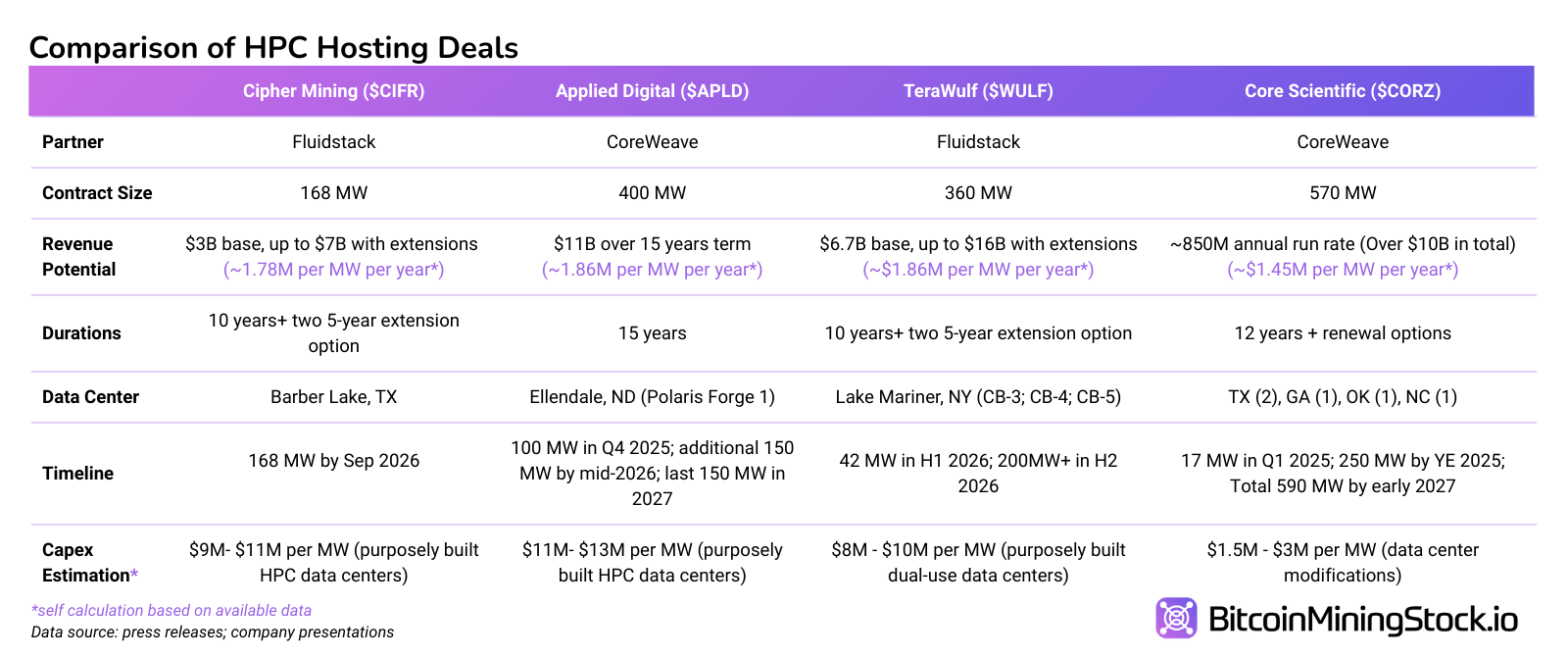
Usually, such bulletins spark a sustained rally. This time, Cipher’s inventory initially ticked up however shortly fell after unveiling a big non-public financing. Inside 24 hours, an $800 million non-public convertible be aware providing upsized to $1.1 billion on overwhelming institutional demand. On social media, buyers blamed the convertibles for killing momentum. Such notion is comprehensible, but it surely’s additionally a reminder that heavy upfront prices are required to make HPC/AI income actual.
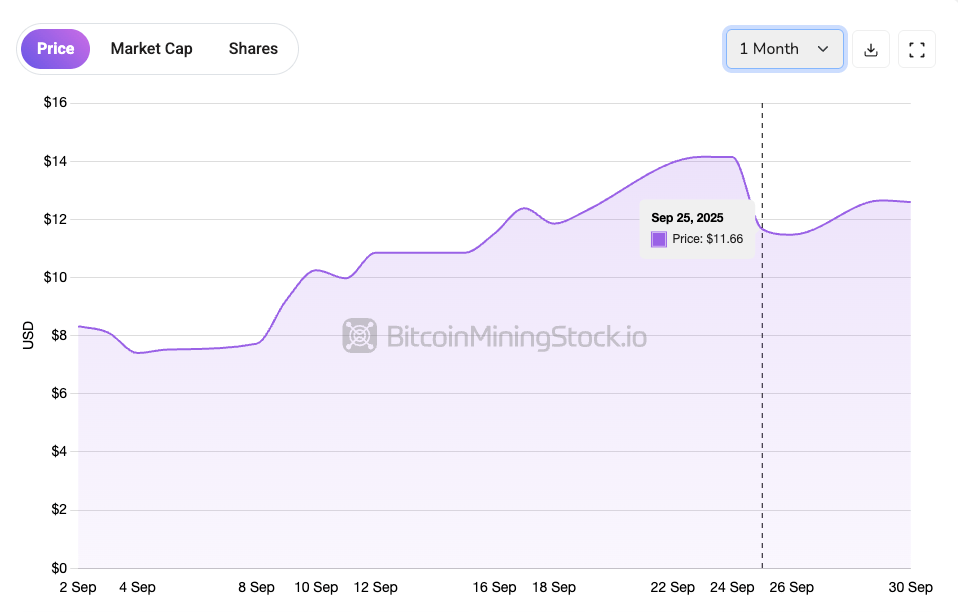
Now let’s unpack the mechanics of this financing deal, as a result of we’ll discover out why establishments rushed in and shareholders reacted cautiously.
HPC Economics and the Financing Hyperlink
Barber Lake website and Cipher’s broader 2.4 GW pipeline are the spine of its HPC technique. Internet hosting hyperscalers requires huge upfront spending on land, energy interconnection, and knowledge heart buildout. The Fluidstack contract validated demand, however capital was the bottleneck.
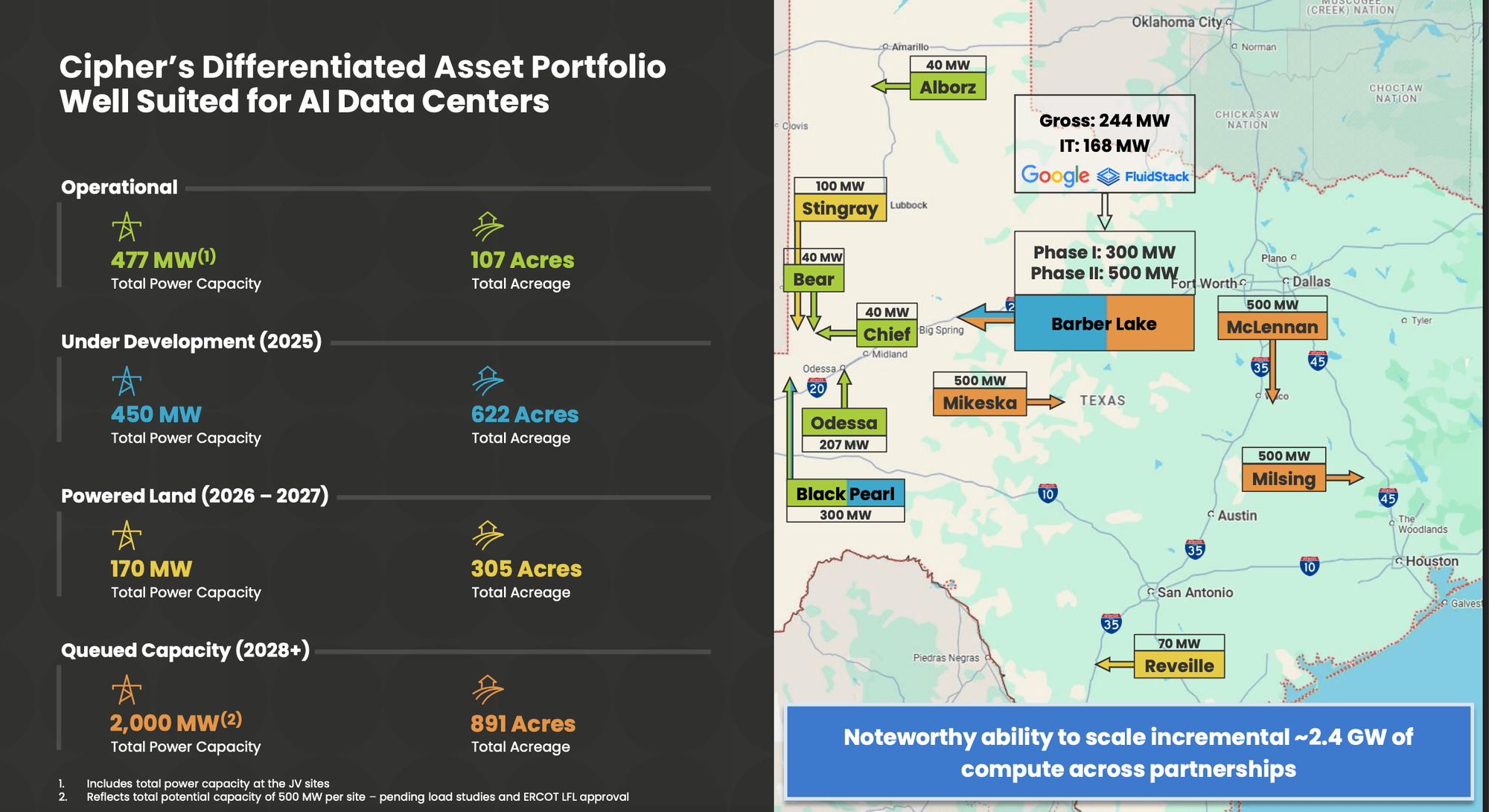
*Barber Lake’s 168MW construct alone is anticipated to require roughly $1.5B – $1.8B in capex, even earlier than factoring within the extra spend wanted to totally leverage Cipher’s broader vitality pipeline.
That’s the place the convertibles are available in. The $1.1B increase will not be an afterthought to the HPC story, it’s a vital step. By securing long-dated capital at zero curiosity, Cipher purchased itself the time and sources to execute. But in doing so, administration shifted danger from operations to fairness construction.
Breaking Down the Convertible Notes
Cipher priced 0.00% convertible senior notes due October 1, 2031, scheduled to choose September 30, 2025. The deal was upsized from $800M to $1.1Balmost instantly, with an extra $200M possibility*, which mirrored the overwhelming institutional demand.
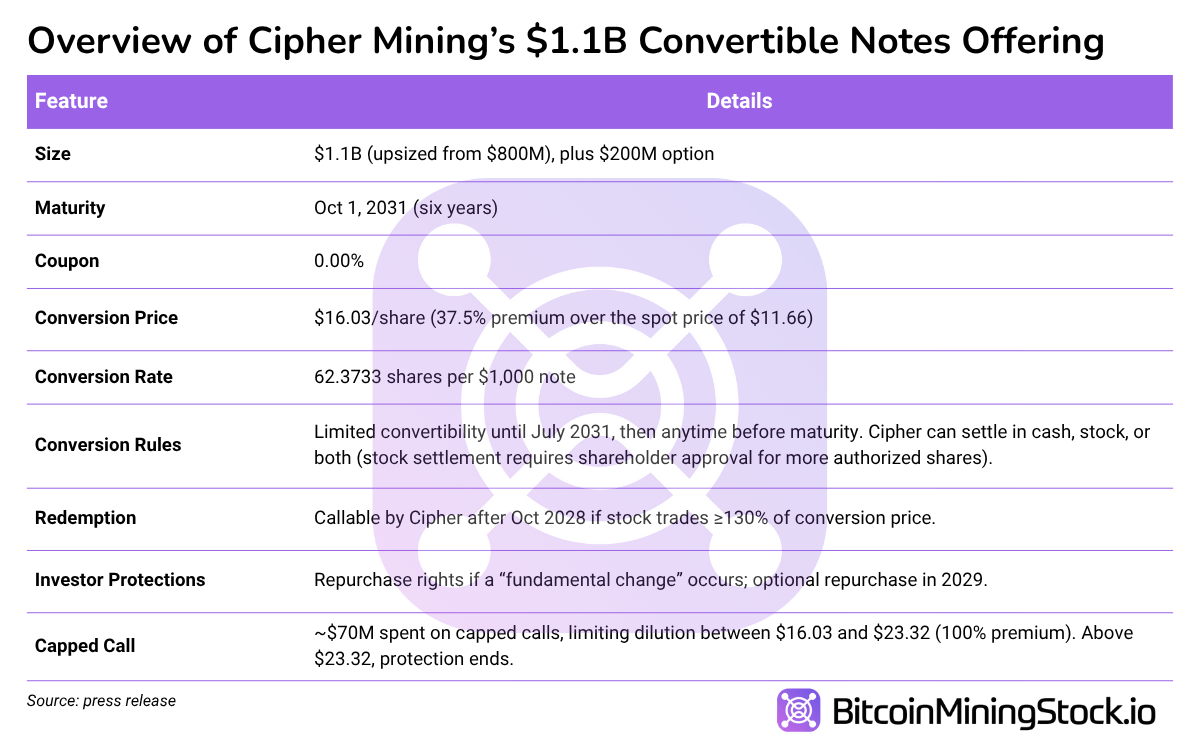
*The $200M buy possibility was exercised, per Cipher’s Kind 8-Okay, bringing the overall convertible notes issued to $1.3 billion.
Relative to see miners, the deal (6-year funding at 0% rate of interest) seems low cost. Some have paid 10%+ rates of interest for money owed or relied on serial fairness issuance. On high of that, Cipher intends to make use of $70M to fund the price of getting into into the capped name transactions, which helps cut back dilution if inventory rises. In different phrases, shareholders are shielded from dilution as much as $23.32 per share (nearly 2x the reported sale worth on September 25, 2025).
Why Establishments Rushed In
At first look this non-public providing, paying no curiosity and being locked till 2031, seems unattractive. However a convertible be aware isn’t a plain bond, it’s primarily a mortgage plus a name possibility on the inventory. Buyers get par reimbursement in 2031 if Cipher struggles, but when the inventory rises above $16.03, they will convert into fairness and seize upside.
For hedge funds, the attraction goes past easy long-term publicity. Many run convertible arbitrage methods, the place they purchase the notes and brief a inventory in proportion to the conversion ratio. The brief hedge is then dynamically adjusted because the inventory worth strikes. The purpose isn’t to guess on an organization’s fundamentals, however to revenue from the option-like construction and volatility of the inventory.
As an example, assume an investor buys $1,000 face worth of notes (62.3733 shares if transformed). Cipher’s inventory was $11.66 ; conversion is at $16.03.
With a static setup, outcomes would appear to be :
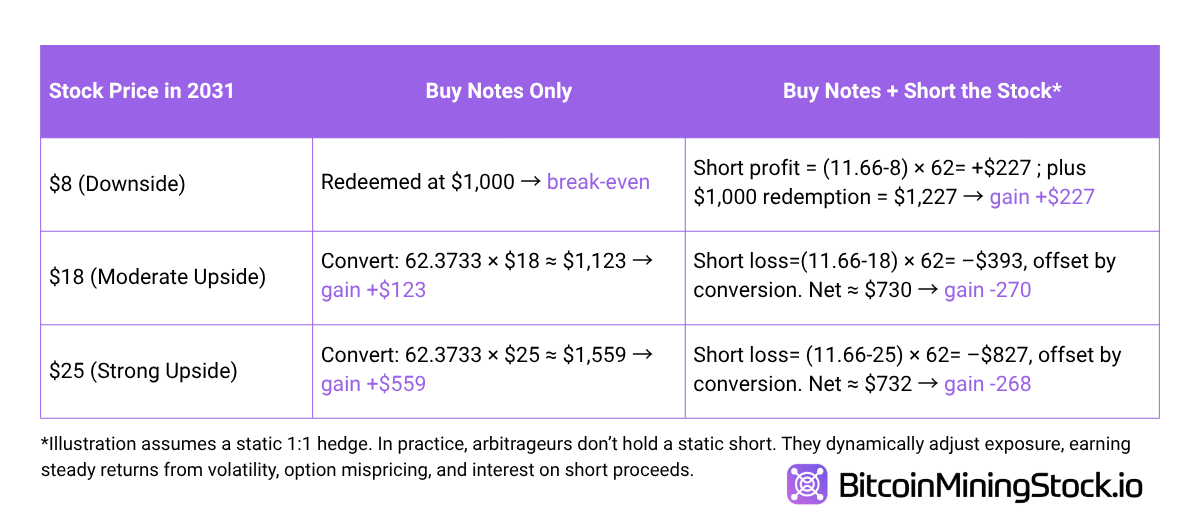
So what does this imply? Though the static math seems unattractive for arbitrageurs at increased costs, dynamic hedging is what makes the technique worthwhile throughout outcomes. That’s why establishments piled in: they get a construction that gives bond-like safety with option-like upside, whereas frequent shareholders solely achieve if Cipher executes efficiently. This explains why the deal was upsized inside hours.
How Dilution Works for Shareholders
For frequent fairness holders, the influence is easy and much much less versatile than it’s for establishments. Cipher at present has ~393M shares excellent. If all notes convert, ~81.1M new shares can be issued, lifting the overall to ~474.1M, a ~17% dilution. The capped name trims this to 9-12% if shares land between $16.03 and $23.32, however past that (>$23.32) the safety runs out and shareholders soak up full dilution.
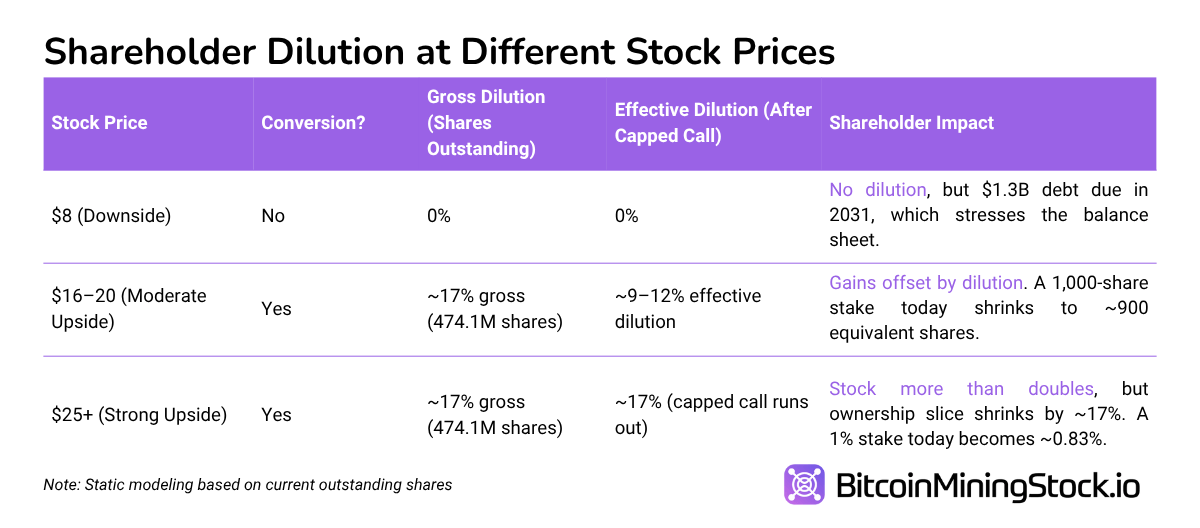
The asymmetry right here: establishments can fine-tune their danger and lock in returns by way of hedging, however shareholders can’t. Fairness buyers have a binary final result: both Cipher executes and the inventory appreciates sufficient to outweigh 9–17% dilution, or it doesn’t and they’re left with a weaker inventory plus $1.3B of debt hanging over the corporate.
Remaining Ideas
Cipher’s Fluidstack contract validates its strategic shift into HPC and AI internet hosting. Like Core Scientific, Utilized Digital, and TeraWulf, the corporate is leveraging vitality and infrastructure to draw hyperscale shoppers, aiming for income streams which might be way more predictable than pure Bitcoin mining.
But the muted inventory response reveals how financing can overshadow even essentially the most constructive headlines. The $1.3 billion convertible notes, structured well with no quick money drain and capped name safety, nonetheless characterize a considerable future declare on fairness. Shareholders face 9–17% dilution if Cipher executes, however that dilution would solely come at considerably increased share costs.
This rigidity explains the divergence: the HPC deal is a transparent strategic win, however the financing reframed investor focus towards danger. Cipher is front-loading capital to construct Barber Lake and activate its 2.4 GW pipeline, a vital step if it desires to monetize HPC demand at scale. If execution is on time and Barber Lake’s 168 MW comes on-line by September 2026 as deliberate, the ensuing revenues might greater than outweigh dilution.
For now, the convertibles give establishments a low-risk, option-like entry level, whereas shareholders carry the execution danger. The HPC story stays compelling, however till tangible revenues materialize, the market will see Cipher much less for its Fluidstack deal and extra for the $1.3 billion financing it used to fund it.





